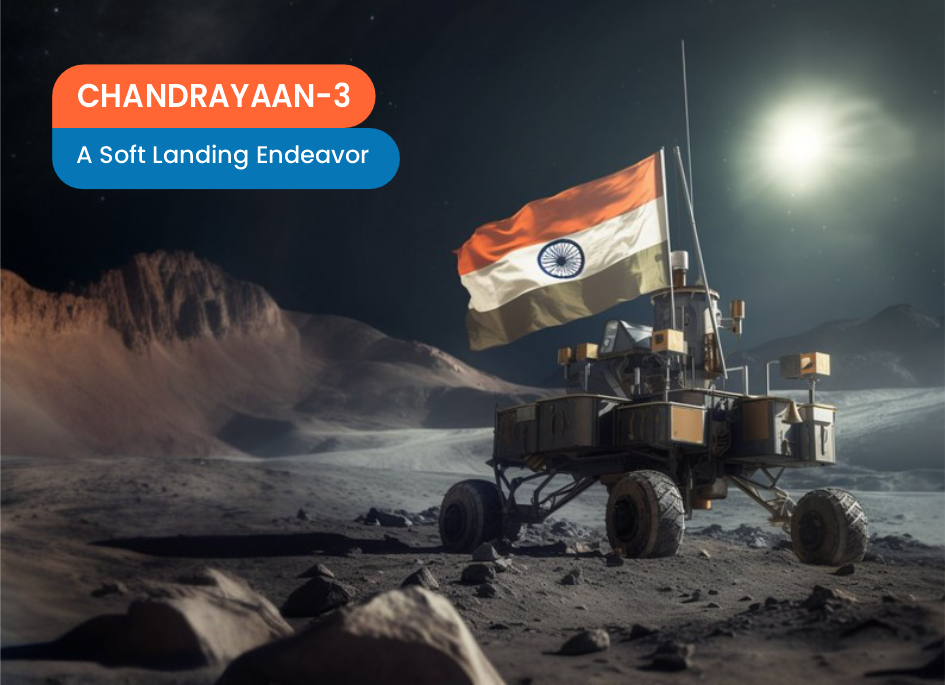
Mission Chandrayaan: All You Need to Know about ISRO’s Chandrayaan Missions
From the immensity of space to the mysteries of celestial bodies, human curiosity has always been drawn to the cosmos. India, with its remarkable space agency, the Indian Space Research Organisation (ISRO). has made significant strides in exploring the Moon through its Chandrayaan missions. These missions stand as a testament to India’s technological prowess, scientific ambition, and unwavering dedication to unraveling the secrets of the universe.
“Learning gives creativity, Creativity leads to thinking, Thinking leads to knowledge, Knowledge makes you great.” – Dr. A.P.J. Abdul Kalam (Missile Man of India)
Chandrayaan-1: A Milestone in Lunar Exploration

In 2008, India achieved a historic feat with the launch of Chandrayaan-1, its first lunar probe. Carrying a suite of scientific instruments, Chandrayaan-1’s primary mission was to study the Moon’s surface and mineral composition. The probe’s key discovery was the presence of water molecules on the lunar surface, revolutionising our understanding of the Moon’s history and potential for future lunar exploration.
The 11th President Of India Dr. APJ Abdul Kalam asked the scientists about what evidence Chandrayaan-1 would exhibit to prove that it had been to the Moon. Later Mr.APJ Abdul Kalam suggested that Chandrayaan-1 should carry an instrument that could be dropped on the Moon’s surface. It was after this advice that the scientists at ISRO made design changes to Chandrayaan-1.
Chandrayaan-2: A Leap Towards Precision
Building upon the success of Chandrayaan-1, ISRO embarked on Chandrayaan-2 in 2019, comprising an orbiter, a lander named Vikram, and a rover named Pragyan—this ambitious mission aimed to explore the Moon’s south pole region, a largely uncharted territory. While the orbiter continues to provide valuable data about the Moon’s exosphere, Vikram’s landing did not go as planned. Nevertheless, the mission demonstrated India’s technological prowess and determination to conquer new frontiers.

Chandrayaan-3: A Soft Landing Endeavor

In 2024, Chandrayaan-3, the eagerly anticipated lunar mission by the Indian Space Research Organisation (ISRO), marks the country’s ambitious stride towards achieving a successful soft landing on the Moon’s surface. Building upon the experiences and lessons learned from its predecessors, Chandrayaan-1 and Chandrayaan-2, this mission aims to further India’s reputation as a formidable player in the global space exploration arena.
Also, ISRO created a historic moment by soft landing on the south pole of the lunar which made India the first country in the world who land on the southern part of the moon. And as of now, India took a walk on the moon: Chandrayaan-3’s rover Pragyan begins exploring the moon’s surface.
Key Objectives and Achievements
- Scientific Exploration: Chandrayaan missions are equipped with sophisticated instruments to analyse the Moon’s surface, mineral composition, and presence of water molecules. These findings deepen our understanding of the Moon’s geological history and its potential as a resource-rich celestial body.
- Technological Advancements: The Chandrayaan program drives technological innovation. It challenges engineers to develop landing systems, communication networks, and remote sensing technologies that withstand the harsh conditions of space.
- Global Collaboration: Chandrayaan missions facilitate international collaboration. They provide valuable data to the global scientific community, fostering knowledge-sharing and collaborative space exploration efforts.
- Inspiration for Future Generations: These missions inspire generations of scientists, engineers, and explorers. They showcase India’s capabilities and motivate young minds to pursue education in science, technology, engineering, and mathematics (STEM).
The Road Ahead
As India’s space program continues to evolve, Chandrayaan missions remain a cornerstone of ISRO’s accomplishments. These missions not only contribute to scientific knowledge but also fuel aspirations for interplanetary exploration. With Chandrayaan-3 on the horizon, India aims to demonstrate its mastery of lunar landing technology and solidify its position as a significant player in the global space exploration arena.
Conclusion
In conclusion, the Chandrayaan missions symbolize India’s quest for knowledge and technological excellence. They have redefined our understanding of the Moon and its potential significance for future space missions. As humanity’s curiosity about the cosmos continues to grow, these missions stand as beacons of exploration, discovery, and innovation on the celestial stage.
